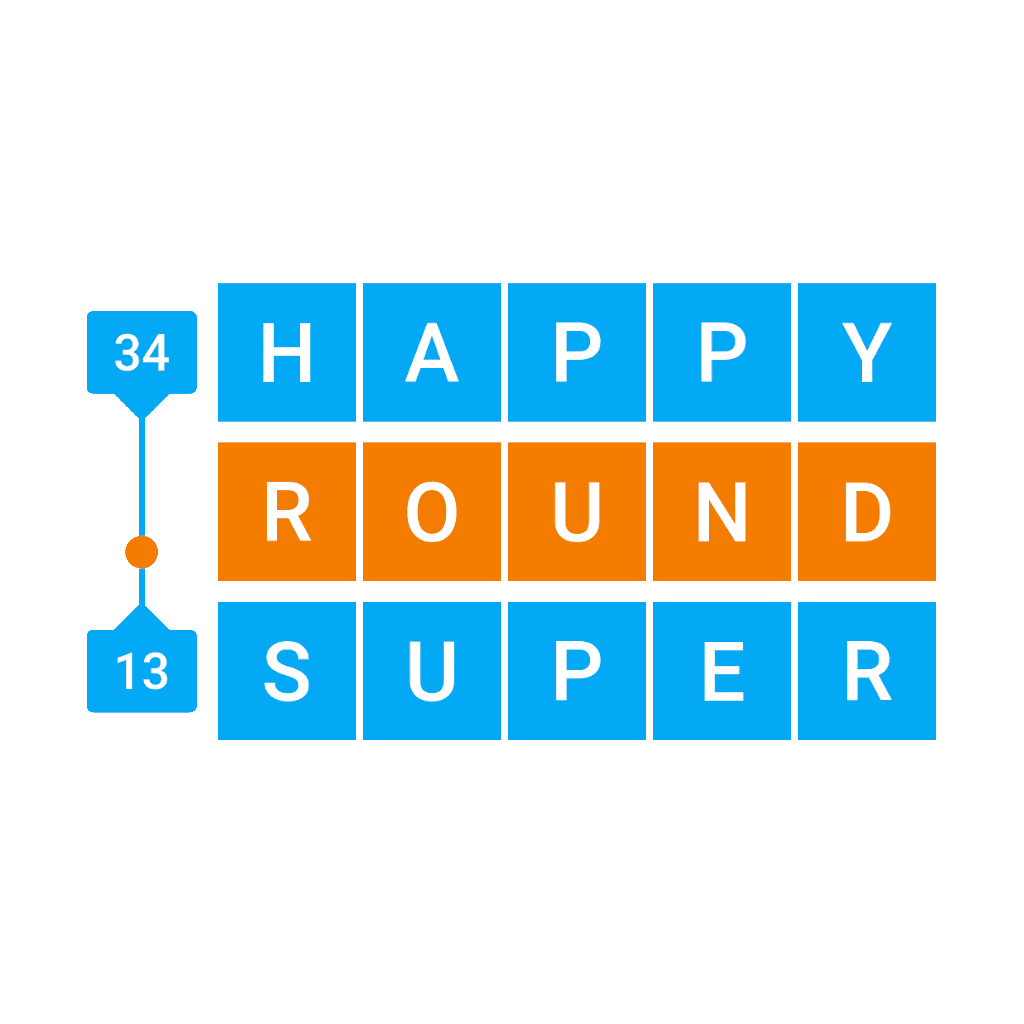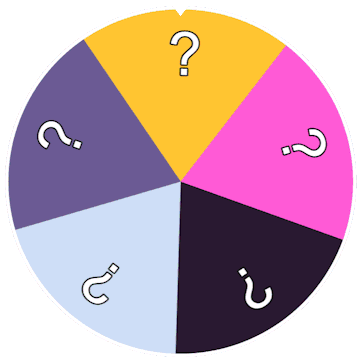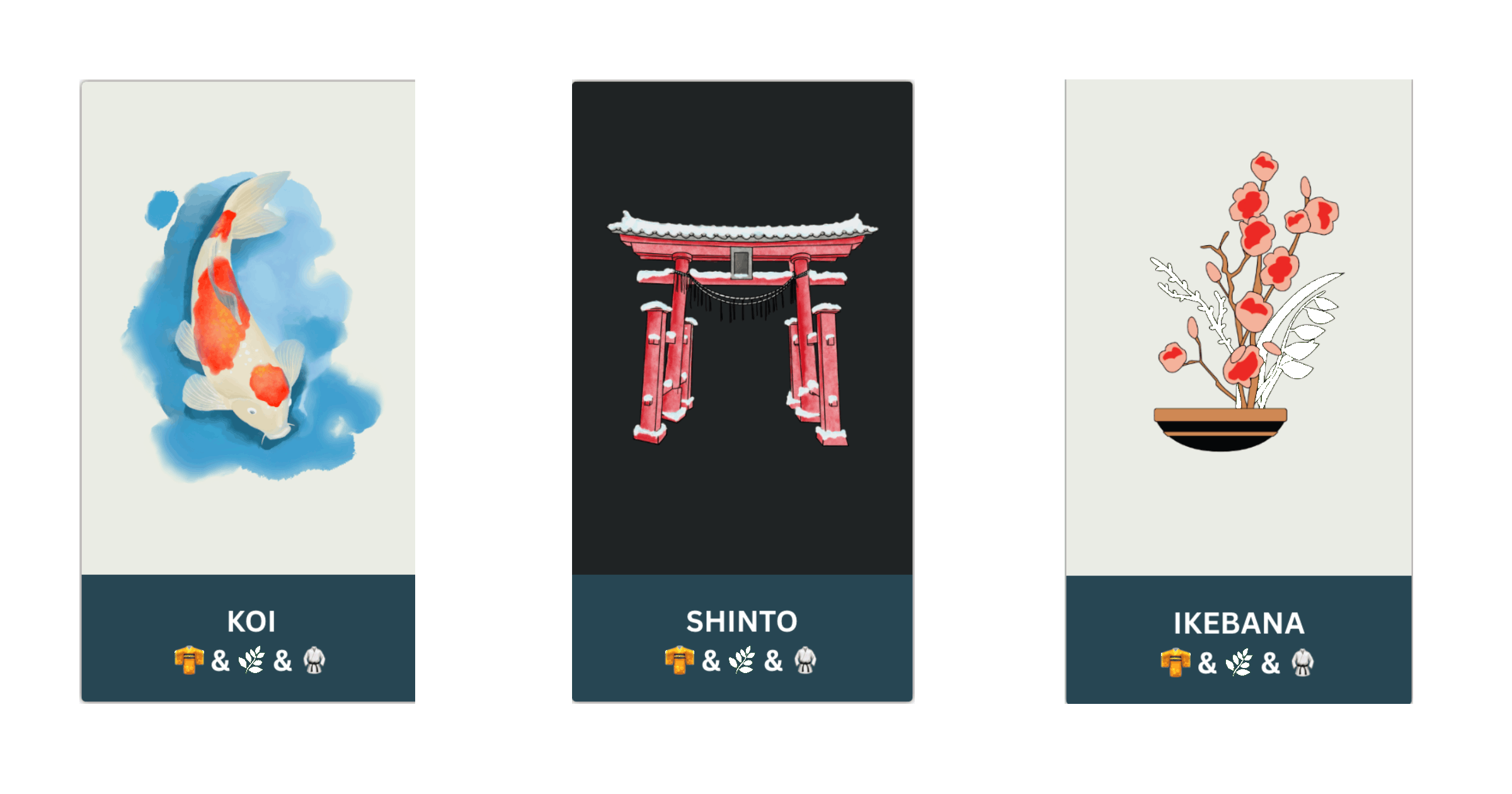From sushi and sumo to sake and Shinto, Japanese words are frequent entries in crossword grids. They're short, vowel-rich, and packed with cultural flair, versatile enough in their clueing to show up everywhere, from the Mini to the Daily Crossword, from easy Mondays to trickier Saturdays and those extended Sunday puzzles.
To help solvers spot and solve these clues faster, we’ve analyzed thousands of crossword puzzles (mostly from The New York Times) to bring you a curated list of Japan-related words that appear again and again. Think of it as your cheat sheet to improving solve times while picking up a few fun facts along the way.
And it’s not just helpful for crosswords. These terms can also expand your vocabulary for Scrabble, Words With Friends, or any other word games. You'll find cultural context and solving tips throughout—so the next time “Japanese lunch box” shows up in your grid, you’ll confidently write in BENTO and keep going.
🍣 Food & Drink
Whether you’re a sushi regular or just learning your miso from your mochi, these edible entries are worth memorizing—not only for your grid but also for your next takeout order.
Let’s start with the classics.
SUSHI, often clued like “Roll in wasabi” or the cryptic-style “Prepared huss with island fish dish,” is one of the most common Japanese food entries in the crossword world. Another staple: TOFU, the versatile soybean curd, appears in many forms, including clues like “Meatless cubes in miso soup.” (Bonus: it has a holiday version—TOFURKY = “Faux meat option at Thanksgiving.”) Add UDON to the mix ("a thick Japanese noodle") and its cousin SOBA, plus NORI, the seaweed wrapping many sushi rolls, and UNAGI, the freshwater eel that’s a sushi restaurant favorite.
Moving into comfort food territory, RAMEN is that beloved noodle soup, often clued as “Japanese noodles, often served with a broth.” Its deep-fried cousin TEMPURA adds some crunch, and TERIYAKI brings the glaze, typically appearing as “A cooking method with a soy sauce-based glaze.”
Green and salty? We’ve got you covered.
EDAMAME, the green soybeans often served steamed and salted, may be clued literally (“Green soybeans”) or more playfully. WASABI, the sinus-clearing paste, often gets clues like “Green, spicy paste.” And MISO, the fermented base of many soups, appears with clues like “Fermented soybean paste (often in soup).”
Next up: desserts and beverages.
MOCHI, the chewy rice cake that often wraps up a Japanese meal, might show up with clues like “Japanese rice cake” or “Post-ramen dessert, maybe.”
Both ASAHI and KIRIN are Japanese beer brands that occasionally show up in grids, often with trivia baked in. You might see clues like “Beer from Japan” or “Brew with a mythical beast on the label.” For KIRIN fans: the kirin is a hybrid creature also known as QILIN - part deer, part dragon, part ox. Another worth-mentioning beverage is SAKE, Japan’s famous rice wine.
Need a quick way to remember these? The table below sums up the key food and drink words from the section, along with clue examples to help you lock them in.
| Word | Clue |
|---|---|
| SUSHI | Roll in wasabi |
| NORI | Seaweed around sushi |
| UNAGI | Freshwater eel, in Japan |
| SAKE | Japanese rice wine |
| TOFU | Soybean curd |
| RAMEN | Noodle soup dish |
| SOBA | A thin Japanese noodle made from buckwheat |
| UDON | Thick Japanese noodle |
| TEMPURA | Deep-fried seafood or vegetables |
| TERIYAKI | A cooking method with a soy sauce-based glaze |
| EDAMAME | Green soybeans |
| WASABI | Green, spicy paste |
| MISO | Fermented soybean paste (often in soup) |
| SOYSAUCE | Liquid condiment coming in various forms from China and Japan |
| MOCHI | Japanese rice cake |
| ASAHI | Beer from Japan |
| KIRIN | Beer with a hybrid deer-horse-ox as its logo |
🎎 Culture, Symbols, and Arts
From ancient traditions to global pop culture, Japanese words tied to art, philosophy, and performance show up in crosswords regularly, and they’re much easier to solve once you’ve seen them once or twice. Here are some of the most frequent entries.
Traditional Attire & Performance
KIMONO, the iconic robe often tied with an OBI (a wide sash), appears in clues like “Garment for an obi” or “Robe for a sumo.” OBI itself also makes frequent crossword appearances, often clued simply as “Kimono sash.” Alongside it, GEISHA, the traditional Japanese entertainer, may be clued as “Hostess with many fans” or simply “Kimono wearer.”
Arts & Aesthetics
BONSAI, the art of growing miniature trees, might show up as “Miniature maple.” It’s often paired with ORIGAMI, the delicate paper-folding art (“Art from a folder”). IKEBANA, the elegant tradition of Japanese flower arranging, also makes the occasional stylish appearance.
Martial Arts & Warriors
Expect KARATE (“In which belts are worn”) and JUDO (“Sport whose name is from the Japanese for ‘soft way’”) to pop up often. SUMO is usually clued as “Wrestling, in Tokyo,” while NINJA and SAMURAI bring feudal flair with clues referencing stealth, skill, or history.
Philosophy & Faith
ZEN is short, versatile, and often clued as “A school of Mahayana Buddhism.” SHINTO, Japan’s indigenous religion, is a bit longer and might appear with more cryptic clues like “Pair of shoguns passionate about Japanese faith.”
Symbols & Creatures
KOI, the ornamental carp, is often linked to garden or pond imagery. TSURU, the Japanese word for crane, symbolizes luck and occasionally appears, especially in origami-related clues.
Pop Culture
MANGA (Japanese comics) and ANIME (animation) have become increasingly common in grids. Look out for clues like “Japanese comics” or “Output of Japan’s Studio Ghibli.” Constructors love these entries for their distinct letter patterns and cultural relevance.
Here’s a quick-reference table to help you review and memorize the key culture and arts terms from this section.
| Word | Clue |
|---|---|
| KIMONO | Traditional Japanese garment |
| OBI | Broad sash worn as part of Japanese national costume |
| BONSAI | Miniature tree art |
| ORIGAMI | Paper folding art |
| GEISHA | Traditional Japanese entertainer |
| SUMO | Japanese wrestling |
| HAIKU | A short form of Japanese poetry |
| KARATE | Martial art |
| JUDO | Martial art |
| NINJA | Covert agent or mercenary |
| SAMURAI | Feudal Japanese warrior |
| SAN | Courtesy title in Japan |
| ZEN | A school of Mahayana Buddhism |
| KOI | Ornamental carp |
| SHINTO | Traditional Japanese religion |
| TORII | Japanese shrine feature |
| MANGA | Japanese comics |
| NOH | Venerable Japanese stage genre |
| ANIME | Japanese animation |
| IKEBANA | Japanese flower arrangement |
| TSURU | Japanese word for crane (bird), often symbolizing luck |
🗾 Geography & Places
While big-name cities like TOKYO and OSAKA need little introduction, crossword clues for Japanese places often lean on lesser-known words. Here's a quick guide to help you spot and remember them.
Let’s start with the easy wins:
Besides TOKYO (capital city) and OSAKA (major city), SAPPORO (a 1972 Winter Olympics host) is also fair game for geography-based or trivia clues.
A bit trickier:
NIPPON, a native term for Japan, is less common in everyday English but loved by constructors for its compact, vowel-rich form. HONSHU, Japan’s largest island, may pop up clued as “Island home to Tokyo,” while OKINAWA, known for its coral reefs and WWII history, might appear with clues like “Coral island of south-west Japan.”
Older capitals and poetic regions:
NARA, a former capital filled with temples and tame deer, is occasionally clued with historical flair. Broader geographic terms, such as FAREAST and EASTASIA, sometimes appear in grids as umbrella terms for the Japan-China region.
The table below helps you lock in the geography clues you’re most likely to spot.
| Word | Clue |
|---|---|
| TOKYO | Capital city |
| NIPPON | Another name for Japan |
| HONSHU | Japan's largest island |
| FUJI | As in Mount Fuji, Apple from Japan |
| OSAKA | Major city |
| OKINAWA | Coral island of south-west Japan |
| SAPPORO | 1972 host city in Japan |
| NARA | Ancient capital of Japan |
| FAREAST | China and Japan's region |
| EASTASIA | Japan and China are in it |
🈂️ Everyday Life & Language
A few Japanese words have made their way into English everyday use—and crosswords love them for their brevity and character.
YEN, Japan’s currency, is a grid staple, often clued simply as “Japanese currency” or “Money in Tokyo.”
SAYONARA, meaning goodbye, may appear with a cultural twist like “Japanese farewell.” And if a clue seems overly polite? DOMO ARIGATO, meaning “thank you very much,” might be the answer, especially when the clue references lyrics (“Merci beaucoup : France :: ___ : Japan”).
BENTO, the all-in-one lunch box, often pops up with clues like “Japanese lunch container” or “Boxed meal with compartments.”
SENSEI, the go-to term for a teacher or martial arts instructor, might be clued as “Karate class leader” or simply “Japanese teacher.”
For short but mighty entries, there’s ICHI (“One” in Japanese), a number-loving gift to crossword grids, and HAI (“Yes” in Japanese), perfect for clues like “Affirmative in Akita.”
Politics & People
Japan’s government and history sometimes sneak into the puzzle too.
DIET, for example, may mislead solvers looking for something edible but it’s the name of Japan’s national legislature. Expect clues like “Japan’s legislative body.”
YOSHIDA, referring to former Prime Minister Shigeru Yoshida, might appear under “Japan’s Premier” or “Ex-head of Japan.”
TYCOON is a familiar English word, but its origins are Japanese: taikun, meaning “great lord.” Crossword constructors love a good etymology angle, so look for clues like “Magnate with a Japanese-derived name.”
Culture & Identity
A couple of less common but culturally rich terms round out this group.
FUTONS are foldable floor mattresses found in many Japanese homes. Clues may range from “Japanese padded quilts” to “Bed unfortunately unsoft.”
AINU, the indigenous people of northern Japan, is both a culturally important entry and a crossword-friendly four-letter word. Clues include “Aboriginal group of Japan” or “Indigenous Hokkaido islander.”
Let’s review the vocabulary from this final group:
| Word | Clue |
|---|---|
| YEN | Japanese currency |
| SAYONARA | Goodbye |
| BENTO | Lunchbox |
| SENSEI | Teacher or master |
| TYCOON | (from "taikun") A powerful business person |
| DIET | Japan's national legislature |
| YOSHIDA | Japan's Premier |
| FOOTONS | Mattresses for the floor in Japan |
| TATAMI | Woven floor mat |
| DOMOARIGATO | Merci beaucoup : France :: ___ : Japan |
| AINU | Aborigine of Japan |
| ICHI | One, in Japanese |
| HAI | "Yes," in Tokyo |
Let’s recap with a quick video review!
Final Clue
Whether you’re brushing up on your bento or spotting a sly clue for tycoon, knowing a bit of Japanese goes a long way in crossword solving and maybe even in your next trivia night. We hope this guide helps you lock in some quick wins and deepen your appreciation for how language and culture meet in the grid.
Hungry for more? Don’t miss our Latin for Crossword Solvers guide, where we decode common Latin words and phrases. And check back often, our puzzle guides are always evolving, just like your solving skills.

 NY Times Mini
NY Times Mini NY Times Crossword
NY Times Crossword NY Times Wordle
NY Times Wordle NY Times Connections
NY Times Connections NY Times Connections Sports Edition
NY Times Connections Sports Edition NY Times Strands
NY Times Strands NY Times Spelling Bee
NY Times Spelling Bee NY Times Pips
NY Times Pips Word Salad
Word Salad Contexto
Contexto Blossom
Blossom Betweenle
Betweenle Conexo
Conexo Bracket City
Bracket City Fluxis
Fluxis Stacks
Stacks Atlantic Crossword
Atlantic Crossword LA Times Mini
LA Times Mini LA Times Crossword
LA Times Crossword Anagram Solver
Anagram Solver Scrabble Word Finder
Scrabble Word Finder Words With Friends Word Finder
Words With Friends Word Finder Atlantic Games
Atlantic Games LA Times
LA Times Zorzzle
Zorzzle Word of Fortune
Word of Fortune
